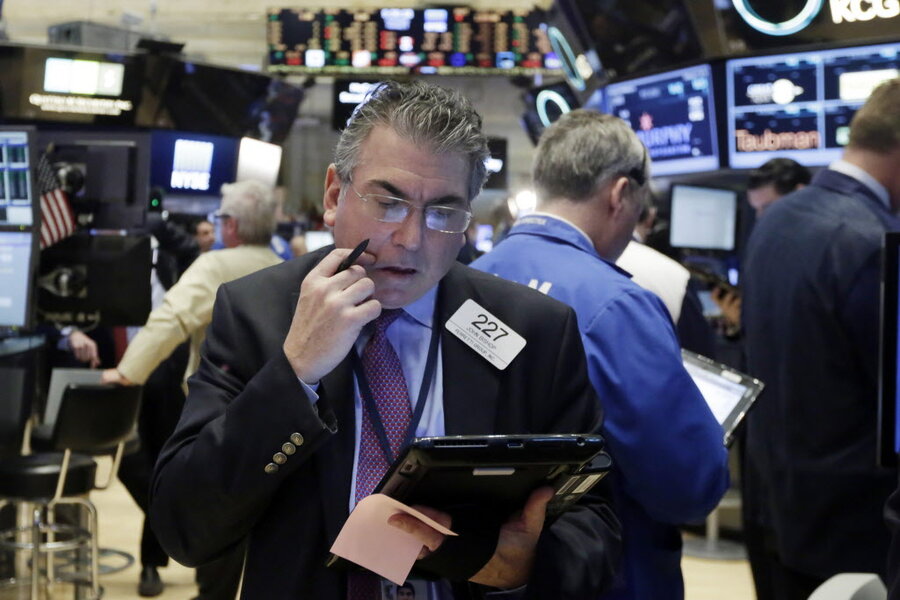Six truths about the stock market
Loading...
The market's downright disappointing start to 2016 (the worst yearly start since 1928), demonstrates that putting money in the market can be a sobering experience. Even when things are moving in a favorable direction, investing is not for the faint of heart. Here are six inconvenient truths about the stock market.
1. The Market Doesn't Always Go Up
While the stock market's long-term trend has been upward, its path has been neither straight nor smooth. Instead, it's been marked by many twists and turns, with some scary downturns thrown in for good measure.
It's easy to make the mistake of hearing about the market's performance for a given year — say it grew by 14% — and assume it moved from January 1st to December 31st in a straight, smooth upward path. But it doesn't usually work that way.
Let's look at 2013 to illustrate the point. That was a year when the S&P 500 generated a remarkable return of nearly 30%. But there were quite a few downturns along the way, including a more than 2% decline on April 15th, the day of the Boston Marathon bombing. Each time the market slipped, you can be sure many investors wondered whether it would continue to fall, and if so, how far.
Those who stayed invested were handsomely rewarded, but the ride got a bit scary at numerous times throughout the year.
2. The Market Regularly Goes Down
From 1900 through 2013, there were 123 corrections (about one per year) and 32 bear markets (one every 3.5 years), according to Ned Davis Research.
Correction is a deceptively neutral-sounding term. When it comes to the stock market, a correction doesn't mean a mistake was found and fixed. It refers to a market decline of at least 10% from its most recent high.
Bear markets are even more severe. They're defined as a decline of at least 20% from the market's most recent high.
Downturns of any kind can be scary. But if you come to expect them from time to time, it can take away some of the fear.
3. No One Knows Which Way the Market Will Go Next
Every January, without fail, stock market prognosticators come out of the woodwork, gaze into their crystal balls, and tell all who will listen where the market will be 12 months later and what sectors will be especially hot. Most fail.
Among recent examples, the consensus forecast called for high single digit market growth in 2015. It ended the year flat. Merrill Lynch thought energy stocks looked promising for 2015. The sector fell 25%.
4. You Can't Time the Market
There are countless studies that demonstrate the impossibility of determining the best times for investors to get in and out of the market. For example, a Morningstar study found that in a 10-year period through the end of 2013, the average mutual fund investor underperformed the average fund performance by 2.5% per year. "In 2009," the company noted, "money flew out of stock funds, but that proved to be the bottom of the market and a great spot to get in."
Even if you are able to get out of the market right before a big decline, chances are you'll be unable to get back in at the right time. Once fear has driven you out, that same fear will make you hesitant to get back in.
The good news is that you don't have to pull off the impossible task of perfectly determining the best time to invest. Consistently investing at the same time each month (which is called "dollar-cost averaging") has proven very effective over time.
5. The Biggest Threat to Successful Investing Is You
There are numerous risks investors face: inflation risk, longevity risk (the ironically-named fear of living a long life, which can be a problem if you don't have enough money saved to cover your costs of living), and market risk, just to name three of the biggest. But an even greater risk is the possibility that you will do something to run your portfolio off the rails.
In addition to ill-advised attempts at market timing, some investors become over-confident during times of rising markets and take on more risk than they should. For others, lethargy is the problem. According to a UBS study, the average Millennial has over half of his or her investment portfolio in cash! Such investors are squandering their unique advantage of having time to maximize the impact of compound interest.
6. You Need the Stock Market
Perhaps most sobering of all, the stock market represents your best opportunity to generate the sort of gains required in order for you to afford all that you'll need and want in your later years. Over the long haul, the stock market has outperformed inflation, cash, bonds, gold, and real estate.
So, make peace with the market. Learn some of the essentials — such as the power of compound interest, how to determine your optimal asset allocation, and the importance of adopting the mindset of a long-term investor, not a short-term trader. Then find and implement a strategy you can stay with no matter how sobering market conditions are at the moment.
This article first appeared at WiseBread.







